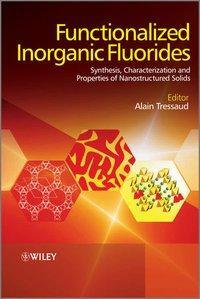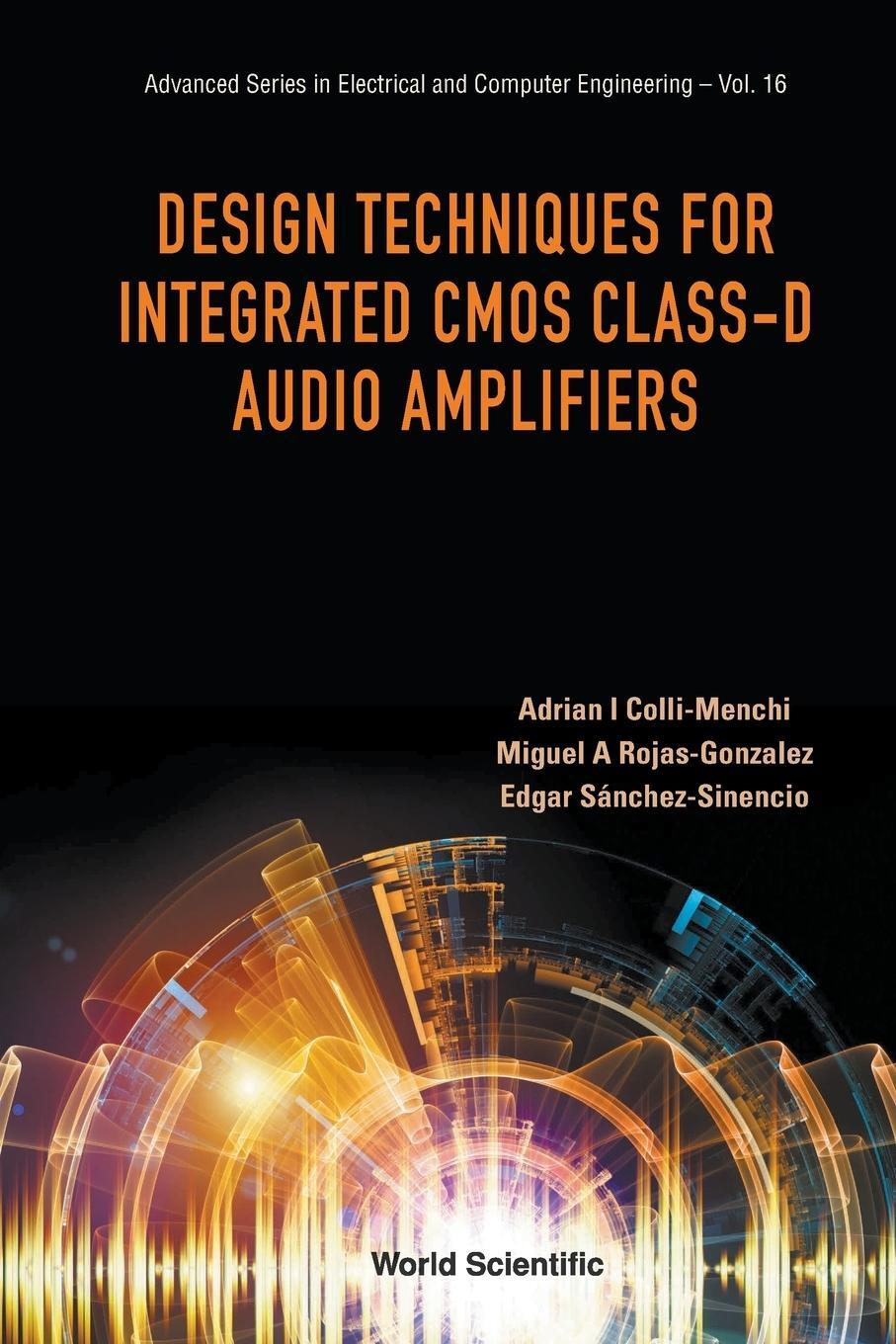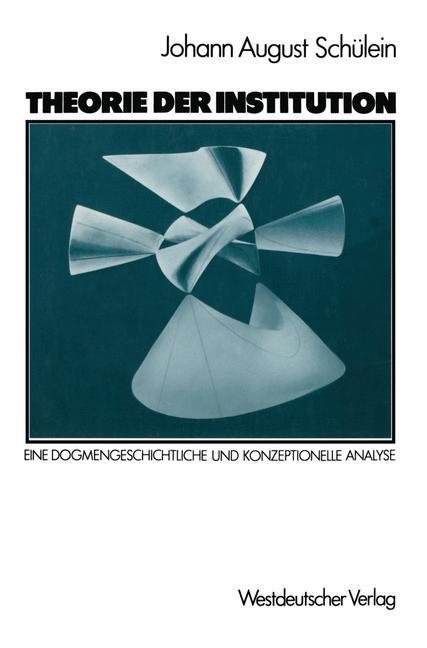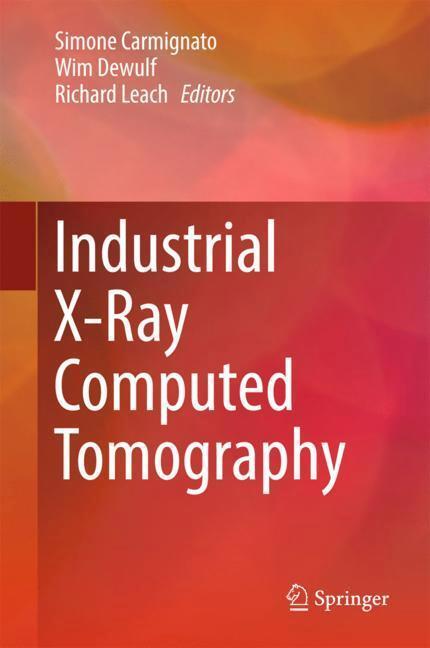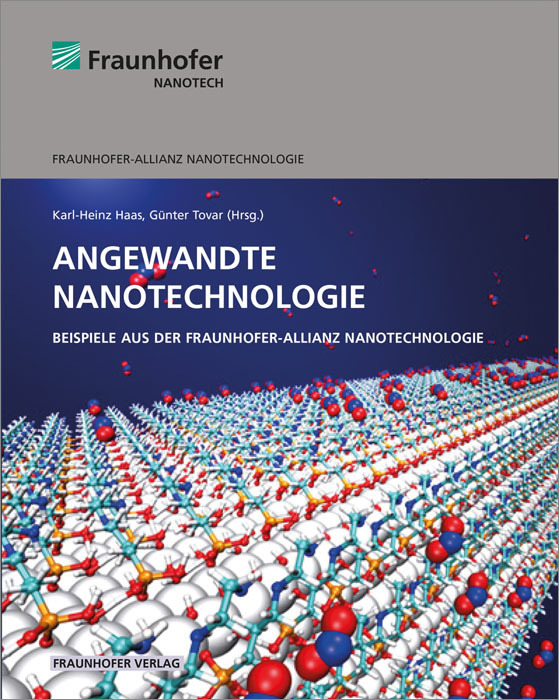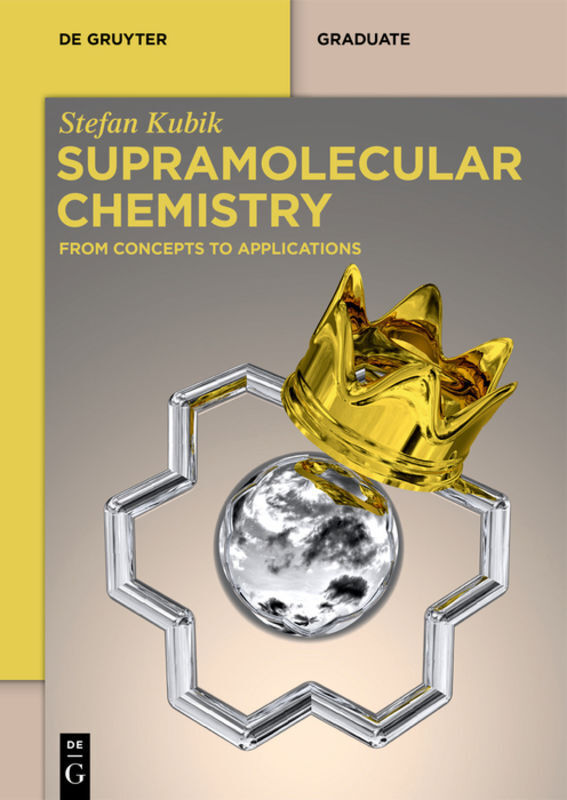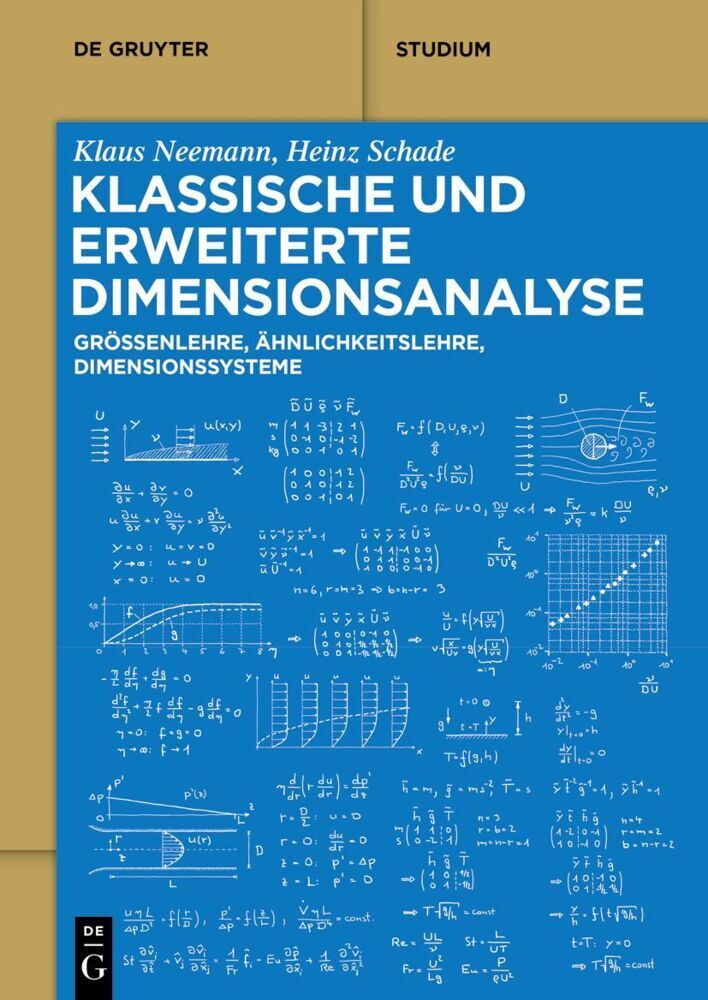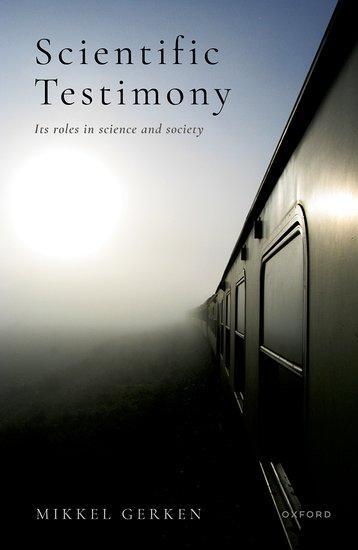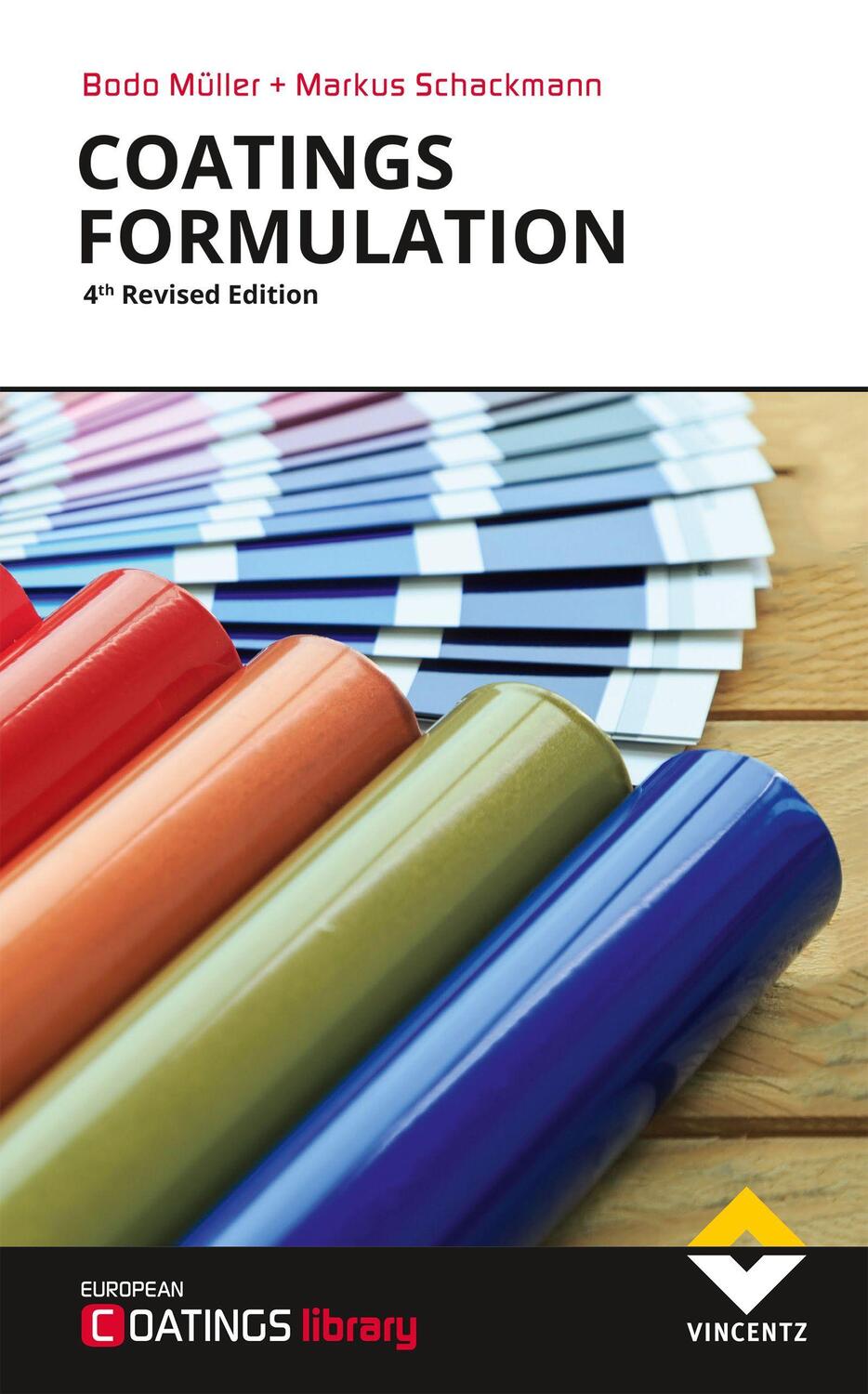Dekorationsartikel gehören nicht zum Leistungsumfang.
Sprache:
Englisch
210,50 €*
Versandkostenfrei per Post / DHL
Aktuell nicht verfügbar
Kategorien:
Beschreibung
Functionalized Inorganic Fluorides: Synthesis, Characterization & Properties of Nanostructured Solids covers several classes of nanostructured and functionalized inorganic fluorides, oxide-fluorides, and fluorinated oxides such as silica and alumina. Ranging from powders or glass-ceramics to thin layers and coatings, they have applications as more efficient and less aggressive catalysts, UV absorbers, planar optical waveguides, integrated lasers and optical amplifiers, luminescent materials, anti-reflective coatings and high Tc superconductors.
With a focus on new types of solids, such as nanopowders, hybrids, mesoporous fluorides, and intercalation compounds, the book covers new synthesis routes; physical-chemical characterizations - including morphology, structure, spectroscopic and optical behaviour; detailed ab initio investigations and simulations; and -last but not least- potential applications.
With a focus on new types of solids, such as nanopowders, hybrids, mesoporous fluorides, and intercalation compounds, the book covers new synthesis routes; physical-chemical characterizations - including morphology, structure, spectroscopic and optical behaviour; detailed ab initio investigations and simulations; and -last but not least- potential applications.
Functionalized Inorganic Fluorides: Synthesis, Characterization & Properties of Nanostructured Solids covers several classes of nanostructured and functionalized inorganic fluorides, oxide-fluorides, and fluorinated oxides such as silica and alumina. Ranging from powders or glass-ceramics to thin layers and coatings, they have applications as more efficient and less aggressive catalysts, UV absorbers, planar optical waveguides, integrated lasers and optical amplifiers, luminescent materials, anti-reflective coatings and high Tc superconductors.
With a focus on new types of solids, such as nanopowders, hybrids, mesoporous fluorides, and intercalation compounds, the book covers new synthesis routes; physical-chemical characterizations - including morphology, structure, spectroscopic and optical behaviour; detailed ab initio investigations and simulations; and -last but not least- potential applications.
With a focus on new types of solids, such as nanopowders, hybrids, mesoporous fluorides, and intercalation compounds, the book covers new synthesis routes; physical-chemical characterizations - including morphology, structure, spectroscopic and optical behaviour; detailed ab initio investigations and simulations; and -last but not least- potential applications.
Über den Autor
Alain Tressaud is Research Director at the Centre National de la Recherche Scientifique (CNRS), and Head of the Functionalized Materials Group at the Institute of Condensed Matter Chemistry of Bordeaux (ICMCB-CNRS), University Bordeaux1.
He has published over 300 papers in international journals, edited / contributed to 12 books, and edited several journal special issues. Alain has also chaired/ organised many international meetings on fluorine, and is Chairman of the French Fluorine Network, CNRS.
He has published over 300 papers in international journals, edited / contributed to 12 books, and edited several journal special issues. Alain has also chaired/ organised many international meetings on fluorine, and is Chairman of the French Fluorine Network, CNRS.
Inhaltsverzeichnis
Preface
List of Contributors
1 Sol-Gel Synthesis of Nano-Scaled Metal Fluorides -
Mechanism and Properties
Erhard Kemnitz, Gudrun Scholz, Stephan Rüdiger
1.1 Introduction
1.2 Fluorolytic sol-gel synthesis
References
2 Microwave-Assisted Route Towards Fluorinated Nanomaterials
Damien Dambournet, Alain Demourgues and Alain Tressaud
2.1 Introduction
2.2 Introduction to Microwave Synthesis
2.3 Preparation of Nanosized Metal Fluorides
2.4 Concluding remarks
Acknowledgements
References
3 High Surface Area Metal Fluorides as Catalysts
Erhard Kemnitz, Stephan Rüdiger
3.1 Introduction
3.2 High Surface Area Aluminium Fluoride as Catalyst
3.3 Host-Guest Metal Fluoride Systems
3.4 Hydroxy(oxo)fluorides as bi-acidic catalysts
3.5 Oxidation Catalysis
3.6 Metal Fluoride Supported Noble Metal Catalysts
References
4 Investigation of surface acidity using a range of probe molecules
Alexandre Vimont, Marco Daturi and John M. Winfield
4.1 Introduction
4.2 Characterisation of Acidity on a Surface: Contrasts with Molecular Fluorides
4.3 Experimental Methodology
4.4 Experimental Studies of Surface Acidity
4.5 Conclusions
References
5 Probing short and medium range order in Al-based fluorides using high resolution solid state nuclear magnetic resonance and parameter modelling
Christophe Legein, Monique Body, Jean-Yves Buzaré, Charlotte Martineau and Gilles Silly
5.1 Introduction
5.2 High Resolution NMR Techniques
5.3 Application to Functionalized Al-Based Fluorides with catalytic properties
5.4 Alkali and Alkaline-earth Fluoroaluminates: Model Compounds for modelling of NMR Parameters
5.5 Conclusion
References
6 Predictive Modelling of Aluminium Fluoride Surfaces
Christine. L. Bailey, Sanghamutra Mukhopadhyay, Adrian Wander, Barry G. Searle and Nicholas M. Harrison
6.1 Introduction
6.2 Methodology
6.3 Geometric Structure of ± and ²-AIF3
6.4 Characterisation of AlF3 Surfaces
6.5 Surface Composition under Reaction Conditions
6.6 Characterisation of Hydroxylated Surfaces
6.7 Surface Catalysis
6.8 Conclusions
Acknowledgements
References
7 Inorganic Fluoride materials from Solvay-Fluor and their industrial applications
Placido Garcia Juan, Hans-Walter Swidersky, Thomas Schwarze and Johannes Eicher
7.1 Introduction
7.2 Hydrogen Fluoride
7.3 Elemental fluorine, F2
7.4 Iodine pentafluoride, IF5
7.5 Sulfur hexafluoride, SF6
7.6 Ammonium bifluoride, NH4HF2
7.7 Potassium fluorometalates, KZnF3 and K2SiF6
7.8 Cryolite and related Hexafluoroaluminates, Na3AlF6, Li3AlF6, K3AlF6
7.9 Potassium fluoroborate, KBF4
7.10 Fluoboric acid, HBF4
7.11 Barium fluoride, BaF2
7.12 Synthetic Calcium fluoride, CaF2
7.13 Sodium fluoride, NaF
7.14 Sodium bifluoride, NaHF2
7.15 Potassium bifluoride, KHF2
7.16 Potassium fluoroaluminate, KAlF4
7.17 Fluoroaluminate fluxes in Aluminum brazing
7.18 Summary
References
8 New nanostructured fluorocompounds as UV absorbers
Alain Demourgues, Laetitia Sronek and Nicolas Penin
8.1 Introduction
8.2 Synthesis of tetravalent Ce and Ti-based oxyfluorides
8.3 Chemical compositions and structural features of Ce and Ti-based oxyfluorides:
8.4 UV shielding properties of divided oxyfluorides
8.5 Conclusion
Acknowledgements
References
9 Oxyfluoride transparent glass-ceramics
Michel Mortier and Géraldine Dantelle
9.1 Introduction
9.2 Synthesis
9.3 Different systems
9.4 Thermal characterisation
9.5 Morphology of the separated phases
9.6 Optical properties of glass-ceramics
9.7 Conclusion
References
10 Sol-Gel Route to Inorganic Fluoride Nanomaterials with Optical Properties
Shinobu Fujihara
10.1 Introduction
10.2 Principle of a Sol-Gel Method
10.3 Fluorinating Reagents and Method of Fluorination
10.4 Control of Shapes and Microstructures
10.5 Optical Properties
10.6 Concluding Remarks
References
11 Fluoride glasses and planar optical waveguides
Brigitte Boulard
11.1 Introduction
11.2 Rare earth in fluoride glasses
11.3 Fabrication of waveguides: a review
11.4 Performances of active waveguides
11.5 Fluoride transparent glass-ceramics: an emerging material
11.6 Conclusion
References
12 Polyanion condensation in inorganic and hybrid fluoroaluminates
Karim Adil, Amandine Cadiau, Annie Hemon-Ribaud, Marc Leblanc and Vincent Maisonneuve
12.1 Introduction
12.2 Synthesis
12.3 Extended finite polyanions (0D)
12.4 1D networks
12.5 2D networks
12.6 3D networks
12.7 Evolution of the condensation of inorganic polyanions
Acknowledgements
Supplementary materials
References
13 Synthesis, structure and superconducting/magnetic properties of Cu- and Mn- based oxyfluorides
Evgeny V. Antipov and Artem M. Abakumov
13.1 Introduction
13.2 Chemical aspects of fluorination of complex oxides
13.3 Structural aspects of fluorination of complex cuprates and superconducting properties
13.4 Fluorination of manganites
13.5 Conclusions
References
14 Doping Influence on the Defect Structure and Ionic Conductivity of Fluorine- Containing Phases
Elena I. Ardashnikova, V. A. Prituzhalovand I. B. Kutsenok
14.1 Introduction
14.2 Influence of Oxygen Ions on Fluoride Properties
14.3 Cation Doping of Fluorides
14.4 Active Lone Electron Pair of Cations and Ionic Conductivity
14.5 Peculiarities of the Defect Structure of Nonstoichiometric Fluorite-like Phases
14.6 Ionic Transfer in Fluorite-like Phases
14.7 Peculiarities of the Defect Structure of Nonstoichiometric Tysonite-like Phases
14.8 Ionic Transfer in Tysonite-like Phases
14.9 Conclusions
References
15 Hybrid intercalation compounds containing perfluoroalkyl groups
Yoshiaki Matsuo
15.1 Introduction
15.2 Preparation and properties of intercalation compounds containing perfluoroalkyl groups
15.3 Photophysical and photochemical properties of dyes in intercalation compounds containing perfluoroalkyl groups
15.4 Conclusion and future perspectives
References
16 The fluoride route: a good opportunity for the preparation of 2D and 3D inorganic microporous frameworks
Jean-Louis Paillaud, Philippe Caullet, Jocelyne Brendlé, Angélique Simon- Masseron and Joël Patarin
16.1 Introduction
16.2 Silica-based microporous materials
16.3 Germanium-based microporous materials
16.4 Phosphate-based microporous materials
16.5 Synthetic clays
16.6 Conclusion
References
17 Access to Highly Fluorinated Silica by Direct F2 Fluorination
Alain Demourgues, Emilie Lataste, Etienne Durand and Alain Tressaud
17.1 Introduction
17.2 Mesoporous silica and fluorination procedure
17.3 About the chemical composition and morphology of highly fluorinated silica
17.4 FTIR analysis
17.5 Thermal stability and water affinity of highly fluorinated silica
17.6 NMR investigations
17.7 Conclusions on the F2-gas fluorination mechanism of mesoporous silica
Acknowledgements
References
18 Preparation and properties of rare-earth containing oxide fluoride glasses
Susumu Yonezawa, Jae-ho Kim and Masayuki Takashima
18.1 Introduction
18.2 Preparation and basic characteristics of oxide fluoride glasses containing LnF3
18.3 Optical and magnetic properties of LnF3-BaF2-AlF3-GeO2 (SiO2) glasses
18.4 Conclusions
References
19 Switchable hydrophobic-hydrophilic fluorinated layer for offset processing
Alain Tressaud, Christine Labrugère and Etienne Durand
19.1 Introduction
19.2 The principles of lithographic printing process
19.3 Experimental part
19.4 Various types of surface modifications using fluorinated rf plasmas
19.5 Comparison of surface modifications of porous alumina using various fluorinated media: CF4, C3F8 and c-C4F8
19.6 Conclusions
Acknowledgements
References
List of Contributors
1 Sol-Gel Synthesis of Nano-Scaled Metal Fluorides -
Mechanism and Properties
Erhard Kemnitz, Gudrun Scholz, Stephan Rüdiger
1.1 Introduction
1.2 Fluorolytic sol-gel synthesis
References
2 Microwave-Assisted Route Towards Fluorinated Nanomaterials
Damien Dambournet, Alain Demourgues and Alain Tressaud
2.1 Introduction
2.2 Introduction to Microwave Synthesis
2.3 Preparation of Nanosized Metal Fluorides
2.4 Concluding remarks
Acknowledgements
References
3 High Surface Area Metal Fluorides as Catalysts
Erhard Kemnitz, Stephan Rüdiger
3.1 Introduction
3.2 High Surface Area Aluminium Fluoride as Catalyst
3.3 Host-Guest Metal Fluoride Systems
3.4 Hydroxy(oxo)fluorides as bi-acidic catalysts
3.5 Oxidation Catalysis
3.6 Metal Fluoride Supported Noble Metal Catalysts
References
4 Investigation of surface acidity using a range of probe molecules
Alexandre Vimont, Marco Daturi and John M. Winfield
4.1 Introduction
4.2 Characterisation of Acidity on a Surface: Contrasts with Molecular Fluorides
4.3 Experimental Methodology
4.4 Experimental Studies of Surface Acidity
4.5 Conclusions
References
5 Probing short and medium range order in Al-based fluorides using high resolution solid state nuclear magnetic resonance and parameter modelling
Christophe Legein, Monique Body, Jean-Yves Buzaré, Charlotte Martineau and Gilles Silly
5.1 Introduction
5.2 High Resolution NMR Techniques
5.3 Application to Functionalized Al-Based Fluorides with catalytic properties
5.4 Alkali and Alkaline-earth Fluoroaluminates: Model Compounds for modelling of NMR Parameters
5.5 Conclusion
References
6 Predictive Modelling of Aluminium Fluoride Surfaces
Christine. L. Bailey, Sanghamutra Mukhopadhyay, Adrian Wander, Barry G. Searle and Nicholas M. Harrison
6.1 Introduction
6.2 Methodology
6.3 Geometric Structure of ± and ²-AIF3
6.4 Characterisation of AlF3 Surfaces
6.5 Surface Composition under Reaction Conditions
6.6 Characterisation of Hydroxylated Surfaces
6.7 Surface Catalysis
6.8 Conclusions
Acknowledgements
References
7 Inorganic Fluoride materials from Solvay-Fluor and their industrial applications
Placido Garcia Juan, Hans-Walter Swidersky, Thomas Schwarze and Johannes Eicher
7.1 Introduction
7.2 Hydrogen Fluoride
7.3 Elemental fluorine, F2
7.4 Iodine pentafluoride, IF5
7.5 Sulfur hexafluoride, SF6
7.6 Ammonium bifluoride, NH4HF2
7.7 Potassium fluorometalates, KZnF3 and K2SiF6
7.8 Cryolite and related Hexafluoroaluminates, Na3AlF6, Li3AlF6, K3AlF6
7.9 Potassium fluoroborate, KBF4
7.10 Fluoboric acid, HBF4
7.11 Barium fluoride, BaF2
7.12 Synthetic Calcium fluoride, CaF2
7.13 Sodium fluoride, NaF
7.14 Sodium bifluoride, NaHF2
7.15 Potassium bifluoride, KHF2
7.16 Potassium fluoroaluminate, KAlF4
7.17 Fluoroaluminate fluxes in Aluminum brazing
7.18 Summary
References
8 New nanostructured fluorocompounds as UV absorbers
Alain Demourgues, Laetitia Sronek and Nicolas Penin
8.1 Introduction
8.2 Synthesis of tetravalent Ce and Ti-based oxyfluorides
8.3 Chemical compositions and structural features of Ce and Ti-based oxyfluorides:
8.4 UV shielding properties of divided oxyfluorides
8.5 Conclusion
Acknowledgements
References
9 Oxyfluoride transparent glass-ceramics
Michel Mortier and Géraldine Dantelle
9.1 Introduction
9.2 Synthesis
9.3 Different systems
9.4 Thermal characterisation
9.5 Morphology of the separated phases
9.6 Optical properties of glass-ceramics
9.7 Conclusion
References
10 Sol-Gel Route to Inorganic Fluoride Nanomaterials with Optical Properties
Shinobu Fujihara
10.1 Introduction
10.2 Principle of a Sol-Gel Method
10.3 Fluorinating Reagents and Method of Fluorination
10.4 Control of Shapes and Microstructures
10.5 Optical Properties
10.6 Concluding Remarks
References
11 Fluoride glasses and planar optical waveguides
Brigitte Boulard
11.1 Introduction
11.2 Rare earth in fluoride glasses
11.3 Fabrication of waveguides: a review
11.4 Performances of active waveguides
11.5 Fluoride transparent glass-ceramics: an emerging material
11.6 Conclusion
References
12 Polyanion condensation in inorganic and hybrid fluoroaluminates
Karim Adil, Amandine Cadiau, Annie Hemon-Ribaud, Marc Leblanc and Vincent Maisonneuve
12.1 Introduction
12.2 Synthesis
12.3 Extended finite polyanions (0D)
12.4 1D networks
12.5 2D networks
12.6 3D networks
12.7 Evolution of the condensation of inorganic polyanions
Acknowledgements
Supplementary materials
References
13 Synthesis, structure and superconducting/magnetic properties of Cu- and Mn- based oxyfluorides
Evgeny V. Antipov and Artem M. Abakumov
13.1 Introduction
13.2 Chemical aspects of fluorination of complex oxides
13.3 Structural aspects of fluorination of complex cuprates and superconducting properties
13.4 Fluorination of manganites
13.5 Conclusions
References
14 Doping Influence on the Defect Structure and Ionic Conductivity of Fluorine- Containing Phases
Elena I. Ardashnikova, V. A. Prituzhalovand I. B. Kutsenok
14.1 Introduction
14.2 Influence of Oxygen Ions on Fluoride Properties
14.3 Cation Doping of Fluorides
14.4 Active Lone Electron Pair of Cations and Ionic Conductivity
14.5 Peculiarities of the Defect Structure of Nonstoichiometric Fluorite-like Phases
14.6 Ionic Transfer in Fluorite-like Phases
14.7 Peculiarities of the Defect Structure of Nonstoichiometric Tysonite-like Phases
14.8 Ionic Transfer in Tysonite-like Phases
14.9 Conclusions
References
15 Hybrid intercalation compounds containing perfluoroalkyl groups
Yoshiaki Matsuo
15.1 Introduction
15.2 Preparation and properties of intercalation compounds containing perfluoroalkyl groups
15.3 Photophysical and photochemical properties of dyes in intercalation compounds containing perfluoroalkyl groups
15.4 Conclusion and future perspectives
References
16 The fluoride route: a good opportunity for the preparation of 2D and 3D inorganic microporous frameworks
Jean-Louis Paillaud, Philippe Caullet, Jocelyne Brendlé, Angélique Simon- Masseron and Joël Patarin
16.1 Introduction
16.2 Silica-based microporous materials
16.3 Germanium-based microporous materials
16.4 Phosphate-based microporous materials
16.5 Synthetic clays
16.6 Conclusion
References
17 Access to Highly Fluorinated Silica by Direct F2 Fluorination
Alain Demourgues, Emilie Lataste, Etienne Durand and Alain Tressaud
17.1 Introduction
17.2 Mesoporous silica and fluorination procedure
17.3 About the chemical composition and morphology of highly fluorinated silica
17.4 FTIR analysis
17.5 Thermal stability and water affinity of highly fluorinated silica
17.6 NMR investigations
17.7 Conclusions on the F2-gas fluorination mechanism of mesoporous silica
Acknowledgements
References
18 Preparation and properties of rare-earth containing oxide fluoride glasses
Susumu Yonezawa, Jae-ho Kim and Masayuki Takashima
18.1 Introduction
18.2 Preparation and basic characteristics of oxide fluoride glasses containing LnF3
18.3 Optical and magnetic properties of LnF3-BaF2-AlF3-GeO2 (SiO2) glasses
18.4 Conclusions
References
19 Switchable hydrophobic-hydrophilic fluorinated layer for offset processing
Alain Tressaud, Christine Labrugère and Etienne Durand
19.1 Introduction
19.2 The principles of lithographic printing process
19.3 Experimental part
19.4 Various types of surface modifications using fluorinated rf plasmas
19.5 Comparison of surface modifications of porous alumina using various fluorinated media: CF4, C3F8 and c-C4F8
19.6 Conclusions
Acknowledgements
References
Details
| Erscheinungsjahr: | 2010 |
|---|---|
| Fachbereich: | Technik allgemein |
| Genre: | Technik |
| Rubrik: | Naturwissenschaften & Technik |
| Medium: | Buch |
| Seiten: | 614 |
| Inhalt: | 614 S. |
| ISBN-13: | 9780470740507 |
| ISBN-10: | 0470740507 |
| Sprache: | Englisch |
| Einband: | Gebunden |
| Autor: | Tressaud, Alain |
| Redaktion: | Tressaud, Alain |
| Herausgeber: | Alain Tressaud |
| Hersteller: |
Wiley
John Wiley & Sons |
| Maße: | 251 x 174 x 40 mm |
| Von/Mit: | Alain Tressaud |
| Erscheinungsdatum: | 14.06.2010 |
| Gewicht: | 1,127 kg |
Über den Autor
Alain Tressaud is Research Director at the Centre National de la Recherche Scientifique (CNRS), and Head of the Functionalized Materials Group at the Institute of Condensed Matter Chemistry of Bordeaux (ICMCB-CNRS), University Bordeaux1.
He has published over 300 papers in international journals, edited / contributed to 12 books, and edited several journal special issues. Alain has also chaired/ organised many international meetings on fluorine, and is Chairman of the French Fluorine Network, CNRS.
He has published over 300 papers in international journals, edited / contributed to 12 books, and edited several journal special issues. Alain has also chaired/ organised many international meetings on fluorine, and is Chairman of the French Fluorine Network, CNRS.
Inhaltsverzeichnis
Preface
List of Contributors
1 Sol-Gel Synthesis of Nano-Scaled Metal Fluorides -
Mechanism and Properties
Erhard Kemnitz, Gudrun Scholz, Stephan Rüdiger
1.1 Introduction
1.2 Fluorolytic sol-gel synthesis
References
2 Microwave-Assisted Route Towards Fluorinated Nanomaterials
Damien Dambournet, Alain Demourgues and Alain Tressaud
2.1 Introduction
2.2 Introduction to Microwave Synthesis
2.3 Preparation of Nanosized Metal Fluorides
2.4 Concluding remarks
Acknowledgements
References
3 High Surface Area Metal Fluorides as Catalysts
Erhard Kemnitz, Stephan Rüdiger
3.1 Introduction
3.2 High Surface Area Aluminium Fluoride as Catalyst
3.3 Host-Guest Metal Fluoride Systems
3.4 Hydroxy(oxo)fluorides as bi-acidic catalysts
3.5 Oxidation Catalysis
3.6 Metal Fluoride Supported Noble Metal Catalysts
References
4 Investigation of surface acidity using a range of probe molecules
Alexandre Vimont, Marco Daturi and John M. Winfield
4.1 Introduction
4.2 Characterisation of Acidity on a Surface: Contrasts with Molecular Fluorides
4.3 Experimental Methodology
4.4 Experimental Studies of Surface Acidity
4.5 Conclusions
References
5 Probing short and medium range order in Al-based fluorides using high resolution solid state nuclear magnetic resonance and parameter modelling
Christophe Legein, Monique Body, Jean-Yves Buzaré, Charlotte Martineau and Gilles Silly
5.1 Introduction
5.2 High Resolution NMR Techniques
5.3 Application to Functionalized Al-Based Fluorides with catalytic properties
5.4 Alkali and Alkaline-earth Fluoroaluminates: Model Compounds for modelling of NMR Parameters
5.5 Conclusion
References
6 Predictive Modelling of Aluminium Fluoride Surfaces
Christine. L. Bailey, Sanghamutra Mukhopadhyay, Adrian Wander, Barry G. Searle and Nicholas M. Harrison
6.1 Introduction
6.2 Methodology
6.3 Geometric Structure of ± and ²-AIF3
6.4 Characterisation of AlF3 Surfaces
6.5 Surface Composition under Reaction Conditions
6.6 Characterisation of Hydroxylated Surfaces
6.7 Surface Catalysis
6.8 Conclusions
Acknowledgements
References
7 Inorganic Fluoride materials from Solvay-Fluor and their industrial applications
Placido Garcia Juan, Hans-Walter Swidersky, Thomas Schwarze and Johannes Eicher
7.1 Introduction
7.2 Hydrogen Fluoride
7.3 Elemental fluorine, F2
7.4 Iodine pentafluoride, IF5
7.5 Sulfur hexafluoride, SF6
7.6 Ammonium bifluoride, NH4HF2
7.7 Potassium fluorometalates, KZnF3 and K2SiF6
7.8 Cryolite and related Hexafluoroaluminates, Na3AlF6, Li3AlF6, K3AlF6
7.9 Potassium fluoroborate, KBF4
7.10 Fluoboric acid, HBF4
7.11 Barium fluoride, BaF2
7.12 Synthetic Calcium fluoride, CaF2
7.13 Sodium fluoride, NaF
7.14 Sodium bifluoride, NaHF2
7.15 Potassium bifluoride, KHF2
7.16 Potassium fluoroaluminate, KAlF4
7.17 Fluoroaluminate fluxes in Aluminum brazing
7.18 Summary
References
8 New nanostructured fluorocompounds as UV absorbers
Alain Demourgues, Laetitia Sronek and Nicolas Penin
8.1 Introduction
8.2 Synthesis of tetravalent Ce and Ti-based oxyfluorides
8.3 Chemical compositions and structural features of Ce and Ti-based oxyfluorides:
8.4 UV shielding properties of divided oxyfluorides
8.5 Conclusion
Acknowledgements
References
9 Oxyfluoride transparent glass-ceramics
Michel Mortier and Géraldine Dantelle
9.1 Introduction
9.2 Synthesis
9.3 Different systems
9.4 Thermal characterisation
9.5 Morphology of the separated phases
9.6 Optical properties of glass-ceramics
9.7 Conclusion
References
10 Sol-Gel Route to Inorganic Fluoride Nanomaterials with Optical Properties
Shinobu Fujihara
10.1 Introduction
10.2 Principle of a Sol-Gel Method
10.3 Fluorinating Reagents and Method of Fluorination
10.4 Control of Shapes and Microstructures
10.5 Optical Properties
10.6 Concluding Remarks
References
11 Fluoride glasses and planar optical waveguides
Brigitte Boulard
11.1 Introduction
11.2 Rare earth in fluoride glasses
11.3 Fabrication of waveguides: a review
11.4 Performances of active waveguides
11.5 Fluoride transparent glass-ceramics: an emerging material
11.6 Conclusion
References
12 Polyanion condensation in inorganic and hybrid fluoroaluminates
Karim Adil, Amandine Cadiau, Annie Hemon-Ribaud, Marc Leblanc and Vincent Maisonneuve
12.1 Introduction
12.2 Synthesis
12.3 Extended finite polyanions (0D)
12.4 1D networks
12.5 2D networks
12.6 3D networks
12.7 Evolution of the condensation of inorganic polyanions
Acknowledgements
Supplementary materials
References
13 Synthesis, structure and superconducting/magnetic properties of Cu- and Mn- based oxyfluorides
Evgeny V. Antipov and Artem M. Abakumov
13.1 Introduction
13.2 Chemical aspects of fluorination of complex oxides
13.3 Structural aspects of fluorination of complex cuprates and superconducting properties
13.4 Fluorination of manganites
13.5 Conclusions
References
14 Doping Influence on the Defect Structure and Ionic Conductivity of Fluorine- Containing Phases
Elena I. Ardashnikova, V. A. Prituzhalovand I. B. Kutsenok
14.1 Introduction
14.2 Influence of Oxygen Ions on Fluoride Properties
14.3 Cation Doping of Fluorides
14.4 Active Lone Electron Pair of Cations and Ionic Conductivity
14.5 Peculiarities of the Defect Structure of Nonstoichiometric Fluorite-like Phases
14.6 Ionic Transfer in Fluorite-like Phases
14.7 Peculiarities of the Defect Structure of Nonstoichiometric Tysonite-like Phases
14.8 Ionic Transfer in Tysonite-like Phases
14.9 Conclusions
References
15 Hybrid intercalation compounds containing perfluoroalkyl groups
Yoshiaki Matsuo
15.1 Introduction
15.2 Preparation and properties of intercalation compounds containing perfluoroalkyl groups
15.3 Photophysical and photochemical properties of dyes in intercalation compounds containing perfluoroalkyl groups
15.4 Conclusion and future perspectives
References
16 The fluoride route: a good opportunity for the preparation of 2D and 3D inorganic microporous frameworks
Jean-Louis Paillaud, Philippe Caullet, Jocelyne Brendlé, Angélique Simon- Masseron and Joël Patarin
16.1 Introduction
16.2 Silica-based microporous materials
16.3 Germanium-based microporous materials
16.4 Phosphate-based microporous materials
16.5 Synthetic clays
16.6 Conclusion
References
17 Access to Highly Fluorinated Silica by Direct F2 Fluorination
Alain Demourgues, Emilie Lataste, Etienne Durand and Alain Tressaud
17.1 Introduction
17.2 Mesoporous silica and fluorination procedure
17.3 About the chemical composition and morphology of highly fluorinated silica
17.4 FTIR analysis
17.5 Thermal stability and water affinity of highly fluorinated silica
17.6 NMR investigations
17.7 Conclusions on the F2-gas fluorination mechanism of mesoporous silica
Acknowledgements
References
18 Preparation and properties of rare-earth containing oxide fluoride glasses
Susumu Yonezawa, Jae-ho Kim and Masayuki Takashima
18.1 Introduction
18.2 Preparation and basic characteristics of oxide fluoride glasses containing LnF3
18.3 Optical and magnetic properties of LnF3-BaF2-AlF3-GeO2 (SiO2) glasses
18.4 Conclusions
References
19 Switchable hydrophobic-hydrophilic fluorinated layer for offset processing
Alain Tressaud, Christine Labrugère and Etienne Durand
19.1 Introduction
19.2 The principles of lithographic printing process
19.3 Experimental part
19.4 Various types of surface modifications using fluorinated rf plasmas
19.5 Comparison of surface modifications of porous alumina using various fluorinated media: CF4, C3F8 and c-C4F8
19.6 Conclusions
Acknowledgements
References
List of Contributors
1 Sol-Gel Synthesis of Nano-Scaled Metal Fluorides -
Mechanism and Properties
Erhard Kemnitz, Gudrun Scholz, Stephan Rüdiger
1.1 Introduction
1.2 Fluorolytic sol-gel synthesis
References
2 Microwave-Assisted Route Towards Fluorinated Nanomaterials
Damien Dambournet, Alain Demourgues and Alain Tressaud
2.1 Introduction
2.2 Introduction to Microwave Synthesis
2.3 Preparation of Nanosized Metal Fluorides
2.4 Concluding remarks
Acknowledgements
References
3 High Surface Area Metal Fluorides as Catalysts
Erhard Kemnitz, Stephan Rüdiger
3.1 Introduction
3.2 High Surface Area Aluminium Fluoride as Catalyst
3.3 Host-Guest Metal Fluoride Systems
3.4 Hydroxy(oxo)fluorides as bi-acidic catalysts
3.5 Oxidation Catalysis
3.6 Metal Fluoride Supported Noble Metal Catalysts
References
4 Investigation of surface acidity using a range of probe molecules
Alexandre Vimont, Marco Daturi and John M. Winfield
4.1 Introduction
4.2 Characterisation of Acidity on a Surface: Contrasts with Molecular Fluorides
4.3 Experimental Methodology
4.4 Experimental Studies of Surface Acidity
4.5 Conclusions
References
5 Probing short and medium range order in Al-based fluorides using high resolution solid state nuclear magnetic resonance and parameter modelling
Christophe Legein, Monique Body, Jean-Yves Buzaré, Charlotte Martineau and Gilles Silly
5.1 Introduction
5.2 High Resolution NMR Techniques
5.3 Application to Functionalized Al-Based Fluorides with catalytic properties
5.4 Alkali and Alkaline-earth Fluoroaluminates: Model Compounds for modelling of NMR Parameters
5.5 Conclusion
References
6 Predictive Modelling of Aluminium Fluoride Surfaces
Christine. L. Bailey, Sanghamutra Mukhopadhyay, Adrian Wander, Barry G. Searle and Nicholas M. Harrison
6.1 Introduction
6.2 Methodology
6.3 Geometric Structure of ± and ²-AIF3
6.4 Characterisation of AlF3 Surfaces
6.5 Surface Composition under Reaction Conditions
6.6 Characterisation of Hydroxylated Surfaces
6.7 Surface Catalysis
6.8 Conclusions
Acknowledgements
References
7 Inorganic Fluoride materials from Solvay-Fluor and their industrial applications
Placido Garcia Juan, Hans-Walter Swidersky, Thomas Schwarze and Johannes Eicher
7.1 Introduction
7.2 Hydrogen Fluoride
7.3 Elemental fluorine, F2
7.4 Iodine pentafluoride, IF5
7.5 Sulfur hexafluoride, SF6
7.6 Ammonium bifluoride, NH4HF2
7.7 Potassium fluorometalates, KZnF3 and K2SiF6
7.8 Cryolite and related Hexafluoroaluminates, Na3AlF6, Li3AlF6, K3AlF6
7.9 Potassium fluoroborate, KBF4
7.10 Fluoboric acid, HBF4
7.11 Barium fluoride, BaF2
7.12 Synthetic Calcium fluoride, CaF2
7.13 Sodium fluoride, NaF
7.14 Sodium bifluoride, NaHF2
7.15 Potassium bifluoride, KHF2
7.16 Potassium fluoroaluminate, KAlF4
7.17 Fluoroaluminate fluxes in Aluminum brazing
7.18 Summary
References
8 New nanostructured fluorocompounds as UV absorbers
Alain Demourgues, Laetitia Sronek and Nicolas Penin
8.1 Introduction
8.2 Synthesis of tetravalent Ce and Ti-based oxyfluorides
8.3 Chemical compositions and structural features of Ce and Ti-based oxyfluorides:
8.4 UV shielding properties of divided oxyfluorides
8.5 Conclusion
Acknowledgements
References
9 Oxyfluoride transparent glass-ceramics
Michel Mortier and Géraldine Dantelle
9.1 Introduction
9.2 Synthesis
9.3 Different systems
9.4 Thermal characterisation
9.5 Morphology of the separated phases
9.6 Optical properties of glass-ceramics
9.7 Conclusion
References
10 Sol-Gel Route to Inorganic Fluoride Nanomaterials with Optical Properties
Shinobu Fujihara
10.1 Introduction
10.2 Principle of a Sol-Gel Method
10.3 Fluorinating Reagents and Method of Fluorination
10.4 Control of Shapes and Microstructures
10.5 Optical Properties
10.6 Concluding Remarks
References
11 Fluoride glasses and planar optical waveguides
Brigitte Boulard
11.1 Introduction
11.2 Rare earth in fluoride glasses
11.3 Fabrication of waveguides: a review
11.4 Performances of active waveguides
11.5 Fluoride transparent glass-ceramics: an emerging material
11.6 Conclusion
References
12 Polyanion condensation in inorganic and hybrid fluoroaluminates
Karim Adil, Amandine Cadiau, Annie Hemon-Ribaud, Marc Leblanc and Vincent Maisonneuve
12.1 Introduction
12.2 Synthesis
12.3 Extended finite polyanions (0D)
12.4 1D networks
12.5 2D networks
12.6 3D networks
12.7 Evolution of the condensation of inorganic polyanions
Acknowledgements
Supplementary materials
References
13 Synthesis, structure and superconducting/magnetic properties of Cu- and Mn- based oxyfluorides
Evgeny V. Antipov and Artem M. Abakumov
13.1 Introduction
13.2 Chemical aspects of fluorination of complex oxides
13.3 Structural aspects of fluorination of complex cuprates and superconducting properties
13.4 Fluorination of manganites
13.5 Conclusions
References
14 Doping Influence on the Defect Structure and Ionic Conductivity of Fluorine- Containing Phases
Elena I. Ardashnikova, V. A. Prituzhalovand I. B. Kutsenok
14.1 Introduction
14.2 Influence of Oxygen Ions on Fluoride Properties
14.3 Cation Doping of Fluorides
14.4 Active Lone Electron Pair of Cations and Ionic Conductivity
14.5 Peculiarities of the Defect Structure of Nonstoichiometric Fluorite-like Phases
14.6 Ionic Transfer in Fluorite-like Phases
14.7 Peculiarities of the Defect Structure of Nonstoichiometric Tysonite-like Phases
14.8 Ionic Transfer in Tysonite-like Phases
14.9 Conclusions
References
15 Hybrid intercalation compounds containing perfluoroalkyl groups
Yoshiaki Matsuo
15.1 Introduction
15.2 Preparation and properties of intercalation compounds containing perfluoroalkyl groups
15.3 Photophysical and photochemical properties of dyes in intercalation compounds containing perfluoroalkyl groups
15.4 Conclusion and future perspectives
References
16 The fluoride route: a good opportunity for the preparation of 2D and 3D inorganic microporous frameworks
Jean-Louis Paillaud, Philippe Caullet, Jocelyne Brendlé, Angélique Simon- Masseron and Joël Patarin
16.1 Introduction
16.2 Silica-based microporous materials
16.3 Germanium-based microporous materials
16.4 Phosphate-based microporous materials
16.5 Synthetic clays
16.6 Conclusion
References
17 Access to Highly Fluorinated Silica by Direct F2 Fluorination
Alain Demourgues, Emilie Lataste, Etienne Durand and Alain Tressaud
17.1 Introduction
17.2 Mesoporous silica and fluorination procedure
17.3 About the chemical composition and morphology of highly fluorinated silica
17.4 FTIR analysis
17.5 Thermal stability and water affinity of highly fluorinated silica
17.6 NMR investigations
17.7 Conclusions on the F2-gas fluorination mechanism of mesoporous silica
Acknowledgements
References
18 Preparation and properties of rare-earth containing oxide fluoride glasses
Susumu Yonezawa, Jae-ho Kim and Masayuki Takashima
18.1 Introduction
18.2 Preparation and basic characteristics of oxide fluoride glasses containing LnF3
18.3 Optical and magnetic properties of LnF3-BaF2-AlF3-GeO2 (SiO2) glasses
18.4 Conclusions
References
19 Switchable hydrophobic-hydrophilic fluorinated layer for offset processing
Alain Tressaud, Christine Labrugère and Etienne Durand
19.1 Introduction
19.2 The principles of lithographic printing process
19.3 Experimental part
19.4 Various types of surface modifications using fluorinated rf plasmas
19.5 Comparison of surface modifications of porous alumina using various fluorinated media: CF4, C3F8 and c-C4F8
19.6 Conclusions
Acknowledgements
References
Details
| Erscheinungsjahr: | 2010 |
|---|---|
| Fachbereich: | Technik allgemein |
| Genre: | Technik |
| Rubrik: | Naturwissenschaften & Technik |
| Medium: | Buch |
| Seiten: | 614 |
| Inhalt: | 614 S. |
| ISBN-13: | 9780470740507 |
| ISBN-10: | 0470740507 |
| Sprache: | Englisch |
| Einband: | Gebunden |
| Autor: | Tressaud, Alain |
| Redaktion: | Tressaud, Alain |
| Herausgeber: | Alain Tressaud |
| Hersteller: |
Wiley
John Wiley & Sons |
| Maße: | 251 x 174 x 40 mm |
| Von/Mit: | Alain Tressaud |
| Erscheinungsdatum: | 14.06.2010 |
| Gewicht: | 1,127 kg |
Warnhinweis

